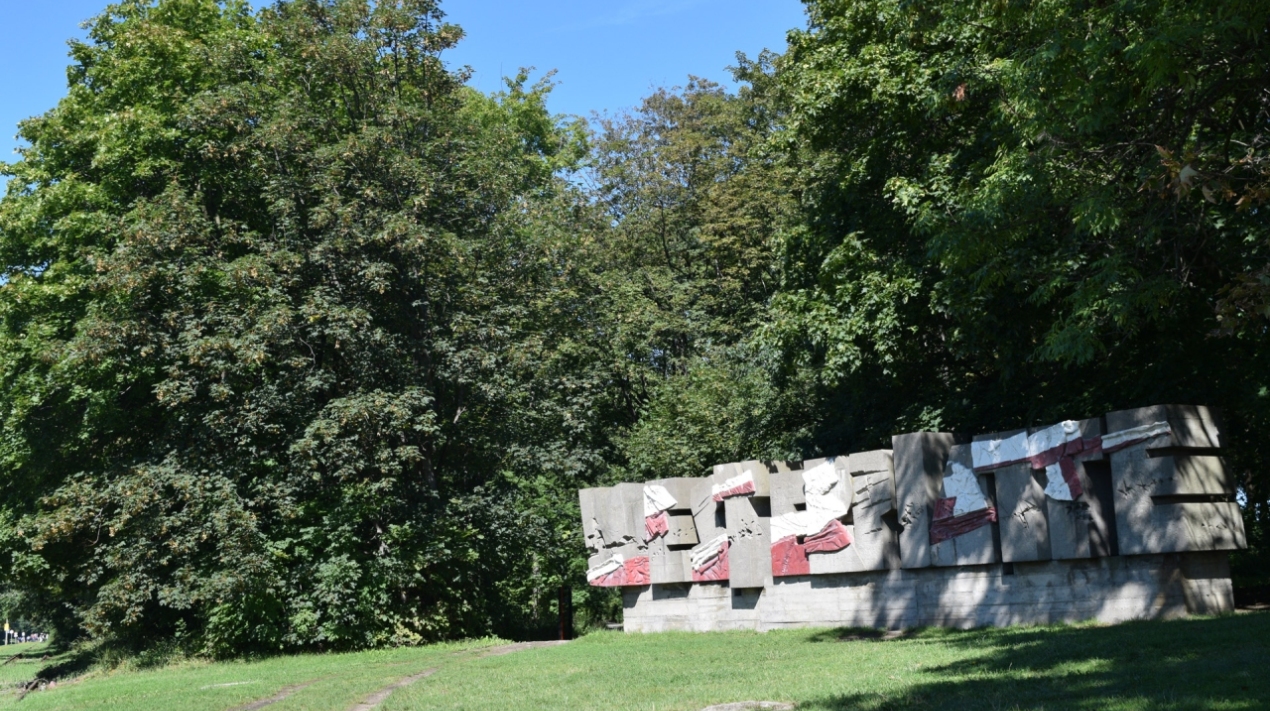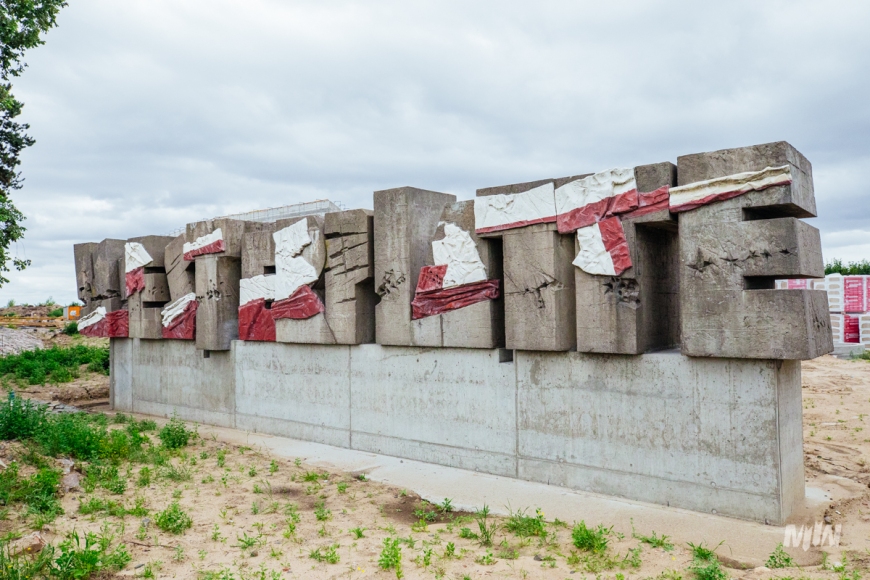Concrete Sculpture Sign ‘Westerplatte’
The concrete sculpture sign ‘Westerplatte’ is one of the symbols of this battlefield. Created in the late 1980s at the entrance to the peninsula, it was intended to serve as an introductory element—something that many believed was previously lacking. The sculpture, as well as the design for the Monument to the Defenders of the Coast, was created by Professor Franciszek Duszeńko of the Academy of Fine Arts in Gdańsk. Those responsible for the development of Westerplatte, including the professor, aimed to revitalize the peninsula in time for the 50th anniversary of the outbreak of World War II. Unfortunately, the revitalization works within the national memorial site were not fully completed on time. The period of crisis and political transformations from 1987 to 1989 resulted in projects such as a new exhibition pavilion to remain only on the drawing board. At that time, efforts were limited to a modest renovation of the Cemetery of the Fallen Defenders of Westerplatte.

A photo from the studio of Professor Duszeńko in Gdańsk. On the shelf, among other things, is a model of the ‘Westerplatte’ sculpture sign (source: Franciszek Duszeńko 1925–2008, collective editorial, Gdańsk 2014).
Due to works around the Tourist Service Building carried out by the Museum of the Second World War (MSWW) with a special budget from the Ministry of Culture and National Heritage (MKiDN), the ‘Westerplatte’ sign was relocated. Due to the ongoing investment and the new parking area, the concrete sculpture was placed in a more prominent location, at the base of the peninsula and the entrance to the battlefield, welcoming visitors.
The entire sculpture weighs about 50 tons, with dimensions of 13 meters by 1.6 meters and a height of approximately 3 meters. The heaviest of the letters weighed about 10 tons. It consists of a series of large letters individually mounted on a concrete, monolithic foundation. Although chipped, and marked with stylized shrapnel and bullet holes, the letters form a cohesive structure. The letters are very clear and unambiguous in their message, carrying a strong emotional charge that the artist expertly emphasized. Contrary to the original concept, the sign was supplemented with colorful, stylized Polish flags, which in places also seem to symbolically express the concepts of medical assistance, sacrifice, and the surrender of the defenders of Westerplatte.
















